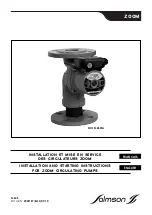
– 38 –
Before You Start Recording
•
It may be unlawful to record or play back copyrighted material without the consent of the
copyright owner.
• The sampling frequency rate converter built in the MD recorder allows you to record a digital source if its sampling
frequency is 32 kHz, 44.1 kHz, or 48 kHz. If no source equipment is connected to the OPTICAL DIGITAL IN
terminal or if the sampling frequency of the connected equipment is not 32 kHz, 44.1 kHz, or 48 kHz, “UNLOCK”
appears in the main display (no recording is possible).
• You cannot record the following sounds: Dolby Digital, DTS Digital Surround, or MPEG Audio signals (through
the OPTICAL DIGITAL IN terminal); the sound signals from the PC (through the USB AUDIO terminal).
• When you record onto a partially recorded MD, its contents are not erased or overwritten. The recording starts from
the point following the last recorded track of the MD. If you want to record on such an MD from the beginning,
you have to erase its contents first (see “Erasing All Tracks—ALL ERASE” on page 59).
• When an MD is fully recorded, recording stops automatically.
• You can adjust the recording level when the source is CD, LINE* or DIGITAL IN*. When the source is FM/AM,
the recording level is automatically set correctly.
* If you have changed the source names, the changed names will appear in the main display.
• The recording level is not affected by the volume. During recording you can adjust the volume you are actually
listening to without affecting the recording level.
• While recording, you can hear the Active Hyper Bass Pro and/or the tone control effect through the speakers or
headphones. However, the playback sound is recorded without these effects (see page 15).
Continued
About the track marks
When playing an MD, you can move among the tracks.
You can do this because there is a mark recorded at the
beginning of each track enabling you to locate the track.
This mark is called a “track mark” and the portion
between two adjacent track marks is called a “track.”
• When using CD synchronized recording:
A track mark is recorded automatically at the beginning
of each track. You cannot put a track mark manually.
• When recording from an analog source—FM,
AM(MW/LW), and external component connected to
the LINE IN jacks:
No track mark is recorded on a disc. This means that,
when playing this disc, an MD recorder will regard the
entire recording as one track. However, if there is a blank
of 3 seconds or more, the unit will consider it as a blank
separating 2 tracks and consequently put a track mark.
• When recording through the OPTICAL DIGITAL IN
terminal:
– If the playback source DOES have track marks
recorded, they are recorded automatically at the points
where the tracks change.
– If the playback source DOES NOT have track marks
recorded, this unit functions in the same way for
recording an analog source.
To put a track mark manually (except when using CD
synchronized recording), press SET on the remote control
at the place you want to put a track mark.
To add a track mark after recording is over, you can use
the DIVIDE function (see page 56).
To avoid erasing important recordings
The recordable MD has an erasure prevention tab so that
important recordings are not accidentally erased. When you
finish recording or editing, slide to open the erasure
prevention tab on the cartridge side surface. New recording
or editing is now no longer possible. (If you try to do,
“DISC PROTECTED” appears in the main display.)
To do re-recording or editing, return the tab to the closed
position.
Erasure prevention tab
Disc protected:
Recording/Editing
not possible
Recording/Editing
possible
If “PLAYBACK DISC” appears in the main
display when you try to record on an MD
The MD is only for playback use, not for recording.
EN37-44_CA-NXMD1R[B]f.pm6
01.8.20, 11:34
38
















































